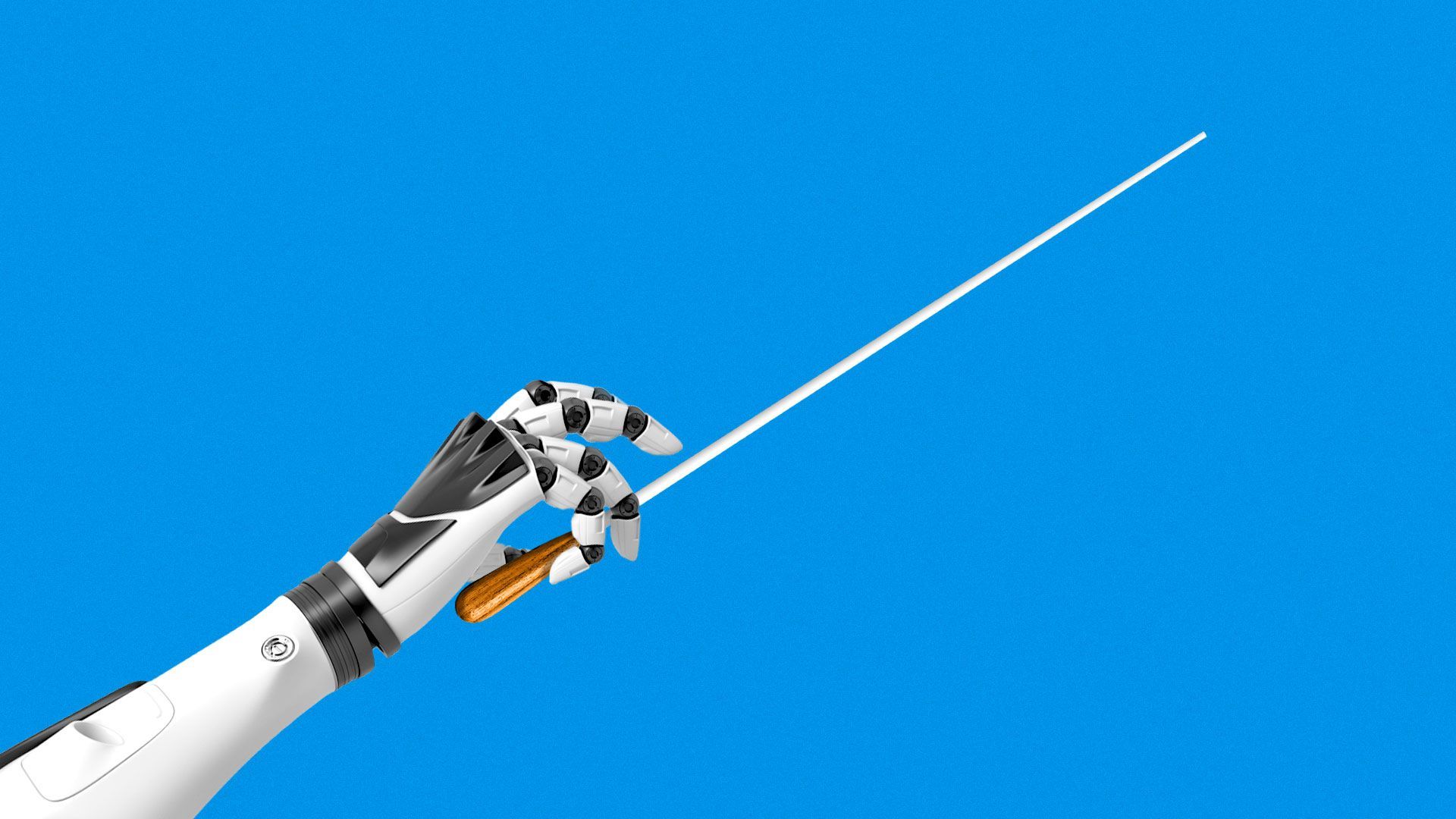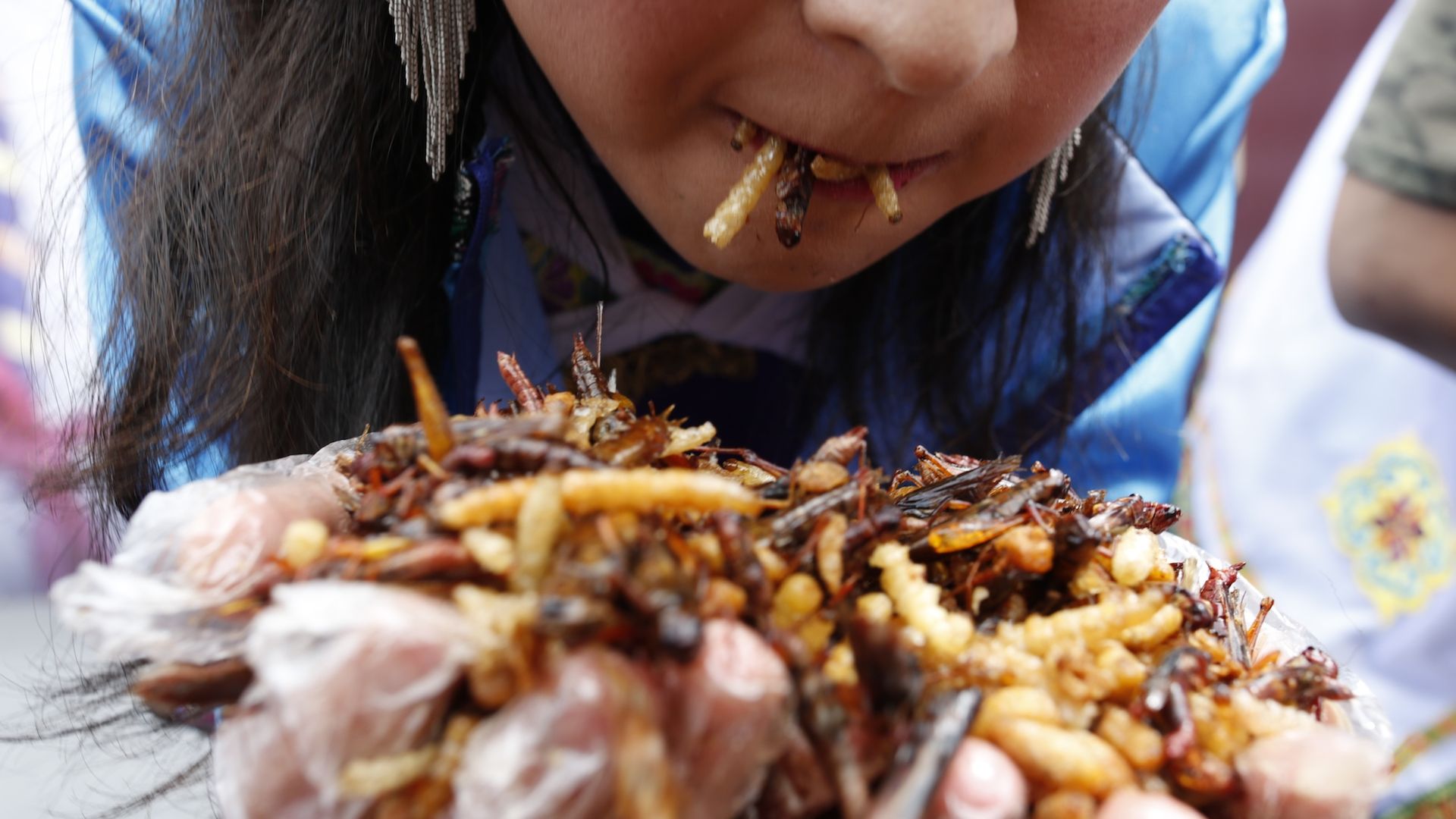| | | | | | | Presented By General Motors | | | | Axios Future | | By Bryan Walsh ·May 12, 2021 | | Welcome to Axios Future, where much like the U.S. Consumer Product Safety Commission, we would like to remind you not to fill plastic bags with gasoline. ♻️ We launched our latest Get Smart video short course series on climate tech. Sign up here. Today's Smart Brevity count: 1,661 words or about 6 minutes | | | | | | 1 big thing: The cicadas are a preview of a buggy future |  | | | Illustration: Annelise Capossela/Axios | | | | Trillions (yes, with a "t") of Brood X cicadas are now emerging throughout parts of the mid-Atlantic and Midwestern U.S. Why it matters: Most immediately, because they can be as loud as a Metallica show when they're singing in concert. - But the behavior of cicadas will provide important clues to how climate change and human influence are altering the environment, and preview a future where some insects — including many of the species that most threaten us — could swarm in ever greater numbers.
By the numbers: As soil temperatures 8 inches underground reach 64°F, it will signal to cicadas of Brood X that it is time to end their 17 years underground and burst through the forest floors and suburban lawns of their native territory. - As a mass, Brood X cicadas emerge in such numbers that as many as 1.5 million can be found in a single acre, which helps enough of them survive predators during their four- to six-week lifecycle to mate, lay hundreds of eggs and start the whole process over again.
- To attract those mates, male cicadas produce sound via the tymbals on either side of their abdomens. When masses of cicadas in a small area all sing at once, the volume can be higher than 85 decibels — loud enough to potentially damage hearing over a prolonged period.
Aside from the annoying noise and the ick factor, cicadas pose no threat to human beings. But the reverse isn't necessarily true. - Because cicadas are dependent on temperature cues to know when to emerge en masse, climate change can mess with their life cycle. Cicadas that emerge off-cycle are known as "stragglers," and there's evidence that some members of Brood X emerged years early, which puts them at greater risk from predators.
The big picture: Climate change and habitat loss have already been implicated in the decline of countless other insects, from wild bees to monarch butterflies to certain kinds of moths. But other insect species will thrive in a warmer world — to the detriment of the rest of us. - While honeybees have been under well-publicized stress, beekeepers have been able to curb losses in recent years. But that's less true for native pollinators, which have suffered as their native habitat has been replaced by sterile lawns.
- In general, though, as temperatures rise, insect metabolism and reproduction rates speed up, which means more insects eating more.
- One recent climate model predicted that as a result, the crop yield lost to pest insects could increase 10–25% for every additional 1.8°F degree of warming.
- A 2019 study predicted that under the most extreme warming scenarios, an additional 1 billion people around the world could face their first exposure to a host of mosquito-borne illnesses like dengue fever and Zika, as hotter temperatures allow the insects to expand their geographic range.
- Suburban development in partially forested areas — as well as climate change — is increasing the threat from tick-borne diseases, with the number of counties in the Northeast and upper Midwest considered at high risk of Lyme disease increasing by more than 300% between 1992 and 2012.
What's next: This month, British biotech company Oxitec launched the first field trial in the Florida Keys of mosquitoes that had been genetically modified to curb population growth and limit the transmission of disease, though experts worry about unknown side effects that could come with releasing modified animals into the wild. The bottom line: Cicadas are a loud, if temporary, nuisance, but more dangerous bugs aren't going anywhere. |     | | | | | | 2. A VR approach to better police training |  | | | Illustration: Eniola Odetunde/Axios | | | | Police are using virtual reality as a less-expensive, more scalable way to train officers for the field. Why it matters: Police in the U.S. are often undertrained — with disastrous results — in part because simulating scenarios with real people is expensive and time-consuming. Better VR technology can help change that. What's happening: Axon, the maker of Tasers and other equipment for military and law enforcement, this week announced the launch of its first VR simulator for police training. - The Phoenix Police Department will be the first agency to incorporate Axon's VR training, which uses headsets from manufacturer HTC.
How it works: Axon's training modules make it possible for officers to practice encounters with the public, as well as rehearse weapon handling using Tasers and handguns that can be integrated into the virtual environment. - "The repetitions in this kind of training is really key," says Luke Larson, Axon's president. "More training, better training, can potentially add up to better outcomes."
Between the lines: Among the training options Axon's VR will include are opportunities for police to virtually experience both sides of a potential encounter — that of the officer, but also that of a community member. - A 2018 study from Stanford found that undergoing a virtual reality experience of being homeless led to greater empathy toward the unhoused — a data point Larson underlines.
- "It's really important to create empathy in these training scenarios where you can use somebody else's perspective to be on the other side of police responding to a mental health situation," he says.
Context: The need for better training is all too clear, with several police officers in recent years mistaking their handguns for stun guns, resulting in tragic deaths, including the killing of Daunte Wright in Minnesota last month. The bottom line: VR training isn't a substitute for safer, more just law enforcement policies, but at least it can help. |     | | | | | | 3. Ginkgo Bioworks CEO on building the Amazon Web Services of biotech |  | | | Ginkgo Bioworks CEO Jason Kelly at the Milken Institute Global Conference in 2019. Photo: Kyle Grillot/Bloomberg via Getty Images | | | | The Boston-based synthetic biology leader Ginkgo Bioworks will go public via SPAC company Soaring Eagle Acquisition. The big picture: Ginkgo increasingly sees itself as a "platform," CEO Jason Kelly tells Axios, charging customers for the use of its biological foundry "like Amazon Web Services does for data center cycles." Details: Ginkgo also takes royalties or equity in the biological apps developed on its platform — "like the Apple App Store," says Kelly. With the money generated by the SPAC deal, "I want to create an ecosystem of services that sits around the much more technical platform." - Those include more lucrative areas like drug research and manufacture. Kelly estimates companies spend some $40 billion on biotech R&D work that could be supported and accelerated on Ginkgo's increasingly automated platform.
The bottom line: Ginkgo's SPAC deal is a bet on a future where coding biology will be as easy — and potentially as lucrative — as coding computers. Read the entire story. |     | | | | | | A message from General Motors | | General Motors' mission is zero-emissions | | |  | | | | By 2040, it is our goal to be carbon neutral and source 100% renewable energy to power our U.S. sites What GM is doing: Which is why we are investing in sustainable processes, flexible platforms and EVs that are accessible to all. Learn more about the initiative. | | | | | | 4. AI-made music startup Boomy launches |  | | | Illustration: Eniola Odetunde/Axios | | | | The AI-aided music startup Boomy is exiting beta-testing and launching to the public. Why it matters: While the computer-aided compositions likely won't be topping the charts anytime soon, machine-made songs are improving, and they point the way toward a future where not just playlists will be personalized, but music itself. How it works: Boomy users can pick a style like hip-hop or reggae, then choose more specific musical characteristics — like "super suave" or "sunset vibes" — to create a machine-generated instrumental track. - They can then choose to add their own vocals, edit the track as they wish, or reject it altogether and generate something entirely new — all of which helps train Boomy's algorithm to produce new music.
- Once they're happy with the songs, users can employ Boomy to upload their music to Spotify and other streaming services, where the company can help them earn royalties off their track. (Users keep 80% of the proceeds, while Boomy takes the rest.)
- "People are going from never having written a song in their lives to having something up on Spotify in 15 minutes, instead of weeks or months," says Alex Mitchell, Boomy's founder and CEO.
By the numbers: As of May 11, Boomy users had created more than 2.5 million songs — nearly 3% of the world's total recorded music, according to the company. The big picture: Boomy is one of a number of startups exploring the AI-generated music space, in addition to bigger corporate and research efforts like OpenAI's Jukebox. Our thought bubble: Boomy and other AI-aided music startups raise questions about the nature of artistic originality in the future, but as a Gen Xer, if it would be possible to create an infinite, personalized radio station where it's always 1994, I have to admit I'd be intrigued. Read the entire thing |     | | | | | | 5. Worthy of your time | | Will artificial intelligence make military pilots go out like the dinosaur? (Kris Osborn — National Interest) - Why the age of the Top Gun — the human one, at least — may be ending.
The myths that hint at past disasters (Mark Piesing — BBC Future) - Ancient stories like the lost city of Atlantis may give us actual facts about the past — and worrying signs about the future.
The strange, soothing world of Instagram's computer-generated interiors (Anna Wiener — The New Yorker) - As CGI technology improves, photo-sharing sites are filling with fantastic homes and rooms that don't exist — and never will.
The destroy-it-to-save-it plan for East River Park (Keith Gessen — New York) - The battle over a riverside park in Manhattan previews climate change adaptation battles to come.
|     | | | | | | 6. 1 buggy thing: Eating insects |  | | | A woman eats fried insects during a competition in Yunnan, China, in 2017. (The winner consumed nearly 3 lbs. of bugs.) Photo: Visual China Group via Getty Images | | | | The emergence of Brood X cicadas is renewing calls for one very simple way to deal with insect populations: eat them. Why it matters: Entomophagy — the eating of insects — is practiced by more than 2 billion people around the world, and it's a highly sustainable way to consume protein. - But for most people in the West, it's still the final frontier of gustatory exploration.
By the numbers: According to a 2013 UN report, edible insects have what is known as a "high food conversion rate." - On average, insects can convert 2 kg of feed into 1 kg of body mass, compared to an 8-to-1 ratio for cattle, while pigs produce 10–100 times more greenhouse gases per kg of weight than mealworms.
Context: Cicadas — which are about to become extremely if temporarily abundant — "taste like shrimp," entomologist Brian Fisher told Wired. - Joseph Yoon, a chef and the executive director of Brooklyn Bugs, told the Washington Post he thinks cicadas could be an on-ramp to entomophagy for squeamish Americans, and he plans to produce cicada dishes for pop-up restaurants.
- Those who want to try out recipes at home can peruse the online cookbook "Cicada-licuous," produced by the ecologist Jenna Jadin.
My thought bubble: Having sampled insects myself — fried scorpion, as seen in the 2008 TIME magazine video I appear in below — I can say they're not that bad. - Though as my face probably shows, they're not that great either.
To be young and adventurous and possessed of a lot more hair. Credit: TIME magazine |     | | | | | | A message from General Motors | | General Motors sets new goal to be carbon neutral by 2040 | | |  | | | | Driven by our transition to EVs, we have set a goal for carbon neutrality in the next 20 years—not just in our operations, but in our products, too. It's our pledge to help get us closer to our vision of an all-electric future. Learn more about General Motors' efforts. | | | | | | Axios thanks our partners for supporting our newsletters.
Sponsorship has no influence on editorial content. Axios, 3100 Clarendon Blvd, Suite 1300, Arlington VA 22201 | | | You received this email because you signed up for newsletters from Axios.
Change your preferences or unsubscribe here. | | | Was this email forwarded to you?
Sign up now to get Axios in your inbox. | | | | Follow Axios on social media:    | | | | | |









No comments:
Post a Comment